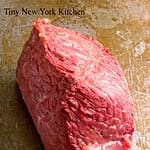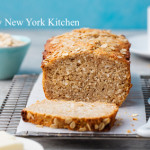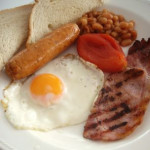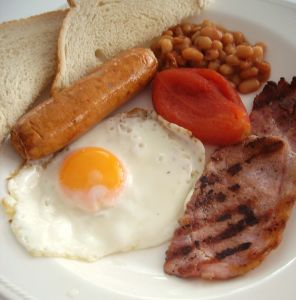It’s that time of year again, in America, when the beer turns green and the aroma of corned beef and cabbage fills the air. The dish is so comforting, but just what is corned beef? The term has nothing to do with corn, but was the English term for a small granule, such as a grain of salt. In days before modern refrigeration, salting meat was a way to preserve it and keep it from spoiling.
Corned beef is an Americanized addition to the traditional Irish diet. While colcannon (boiled potatoes, cabbage, and leeks in buttermilk flavored with wild garlic) was a common Irish dish, as was brown soda bread, corned beef was produced primarily for export to England. Upon arriving in America, however, it’s thought the Irish chose to celebrate their holiday with food that was typically not available to them in their home country, so corned beef was added to the menu, as was white soda bread studded with currants and caraway.
Corned beef is typically made from beef brisket, which is a cut of meat from the breast or lower chest, but the rump, bottom round, and even tongue, can be used. In America, the term “corned beef” is used to describe both the cured meat and the canned stuff found on grocery store shelves. In Britain, they call the canned stuff “salt beef.”
To make corned beef the meat is simmered in a blend of corned beef spices that usually include peppercorns, garlic, mustard, tarragon, thyme, parsley, cloves, and nutmeg.
In New England, you most often see corned beef served as a St. Patrick’s Day main dish or in a sandwich. As the main ingredient in New England Boiled Dinner, corned beef often pairs with potatoes, carrots, turnips, and cabbage in a hearty, savory, brothy bowl of goodness. When used in a sandwich, the most popular corned beef sandwich is the Reuben. Considered the quintessential Jewish deli sandwich, a Reuben is toasted rye bread stuffed with hot slices of corned beef, usually piled high, and topped with sauerkraut, Swiss cheese, and either Russian or Thousand Island dressing.
In New England, a frequent point of interest is also whether you prefer red vs. gray corned beef. The difference is “Red” brisket is cured with nitrite, which gives the meat its signature color. “Gray” corned beef, which is considered the authentic New England variety, is not cured with nitrate, so color forms naturally as it brines.
If you have corned beef leftovers a New England favorite is corned beef hash, which is typically served for breakfast.
“Work With What You Got!”
©Tiny New York Kitchen © 2018 All Rights Reserved
How lucky we are this year that Saint Patrick’s Day falls on the weekend so how about having a traditional full Irish breakfast.
Start with traditional bangers and then choose either Canadian bacon or double hickory smoked bacon. Add Eggs, grilled tomatoes, soda bread, baked beans and coffee or Irish breakfast tea. You can top your grilled tomatoes with grated cheese and herbs or have them just grilled. Your eggs can be fried, poached or scrambled.
Bangers are the cornerstone of the traditional full Irish breakfast. Irish loin bacon is very similar to Canadian bacon as both are cut from the pork loin and are fairly lean meats. They are cured and not smoked. Irish bacon also has a small bit of tail meat connected to the eye of the loin. Double hickory smoked bacon is very similar to American bacon or what is called streaky bacon in the British Isles. This type of bacon comes from the pork belly and is easily distinguished by the stripes of lean and fat that run through it. Double hickory smoked bacon is a fine substitute if you decide not to use Canadian bacon.
Irish breakfasts vary from cook to cook and region to region by incorporating local specialties. Some regional favorites include mashed potatoes that are fried with leftover vegetables, blood sausage or sautéed mushrooms.









